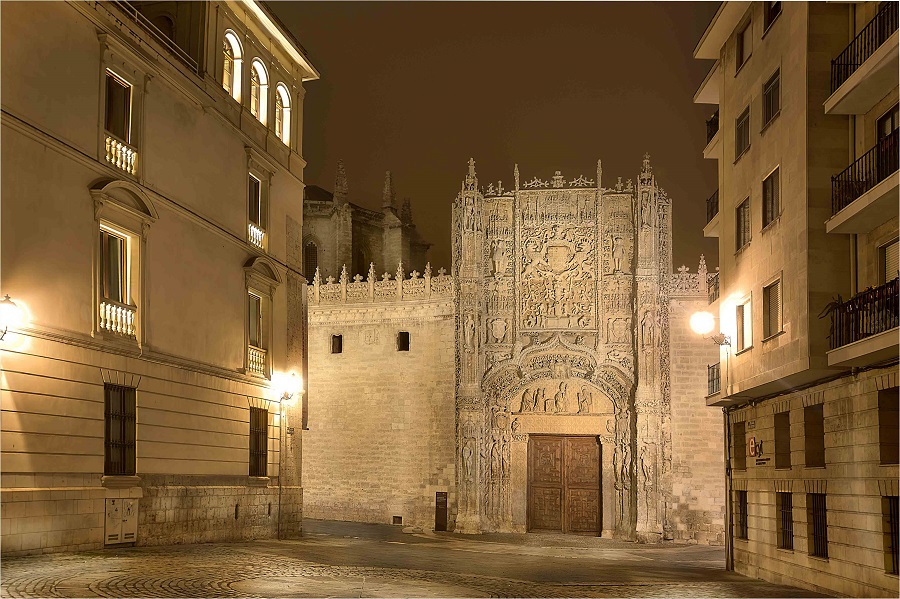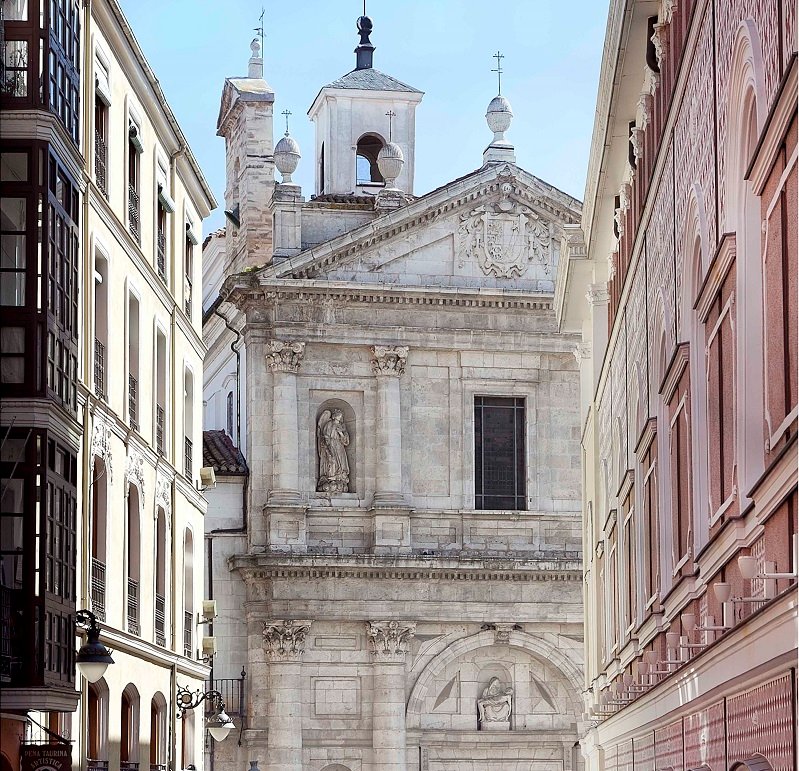Lugares - monumentos - Iglesia de las Angustias
Breadcrumb
Breadcrumbs
Asset Publisher
Seminary School of Saint Gregory

Discover its enigmatic façade
It is an architectural work from the end of the 15th Century, under the guidance of Fray Alonso de Burgos, confessor of the Catholic Monarchs and Bishop of Palencia.
Its monumental façade replete with decorative and sculptured elements attributed to Gil de Silóe is worth noting. With Fray Alonso before the Pope in the tympanum and St. Dominic and St. Paul at the sides.
The buttresses are decorated with warriors. There are also angels with the armorial bearings of the founder. In the centre piece there is a pomegranate tree sheltering the arms of the Catholic Monarchs with a pomegranate in the top representing their conquer (so it is dated after 1492).
The design of the chapel, where the bishop is buried, is attributed to the architects Juan Guas and Juan de Talavera, starting in 1484. In 1499 a sacristy by Simón de Colonia was attached to it. Now it is state property and houses since 1933 the National Scultpture Museum.
Navigation Menu
Asset Publisher
Calle de las Angustias, 8
Asset Publisher
LOCATION
Widget tiempo Valladolid
Media Gallery
Valladolid seen through the eyes of its inhabitants and tourists
Asset Publisher
Church of the Anguishes

Inspired by the Cathedral
Built between 1597 and 1606, it features the characteristic elements of a penitential temple, adapted to accommodate processional floats, and includes a balcony-tribune for the use of the confraternities. Its beautiful façade, in the Herrerian style, takes inspiration from the Cathedral of Valladolid.
Inside, it houses valuable treasures, such as the main altarpiece with paintings by Tomás de Prado and sculptures by Francisco de Rincón, as well as an ensemble of excellent artworks from the 17th and 18th centuries by artists like Gregorio Fernández and Juan de Juni.
